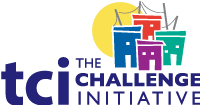Nigeria Toolkit: AYSRH Services and Supply
- Home
- Help and Support
- Close
- Toolkits
- Global Toolkit
- AYSRH Toolkit
- Hub Toolkits
- Core High-Impact Practices
- Gender Essentials Mini Course
- Close
- Resource Collection
- Community of Practice
- Coaching
- Log In/Register
- My Profile
- English
Adolescent and Youth-Friendly Health Services
What is It?
 The Adolescent and Youth Friendly Health Services (AYFHS) approach is a guide on how state governments can improve the provision of adolescent and youth reproductive health (AYRH) services based on the needs of those 15- to 24-years-old.
The Adolescent and Youth Friendly Health Services (AYFHS) approach is a guide on how state governments can improve the provision of adolescent and youth reproductive health (AYRH) services based on the needs of those 15- to 24-years-old.
AYFHS is offered in a manner and environment that is safe and accessible to adolescents and youth, and follows the Nigeria National Standards & Minimum Service Package for Adolescent & Youth Friendly Health Services, (2018). This document elaborates upon the nine national standards for seamless integration of youth-friendly services into health facilities and at the community level.
Why is it important?

This approach provides a step-by-step guide on how The Challenge Initiative provides technical support to local government to ensure that health facilities are adolescent and youth-friendly and facilitate unrestricted access to quality reproductive health services, including contraceptive services in Nigeria.
This approach helps health managers and service providers to:
- Operationalize AYFHS according to Standard Operating Procedures defined in the Nigeria National Standards & Minimum Service Package for Adolescent & Youth Friendly Health Services, (2018)
- Enhance their skills and competencies through coaching and supervision to deliver the nationally defined package of health services to adolescents and youth
- Ensure that all staff (including administrative and support staff) undergo Whole-site Orientation to ensure access of adolescents and youth to these quality health services including Information and referral as relevant
- Facilitate the engagement of adolescents and youth in designing, providing and monitoring these quality health services
- Implement periodic self-assessments to measure access to and the quality of the AYFHS provided for continuous quality improvement
Facility identification and assessment
Local governments identify facilities for the implementation of AYFHS using the following criteria:
- High volume facilities where young people seek medical care (using HMIS data like outpatient department records)
- Communities/facilities with high number of youth population
- Communities/facilities with high number of unmarried / married adolescents
- Proximity of facilities to tertiary institutions
- Other geography peculiar to youth-specific demographic data that might be relevant for consideration
Following facility selection, assessment is carried out in all the selected health facilities, using the Performance Improvement Assessment (PIA) tool to serve as a baseline for AYFHS in these facilities. This tool was developed using the Minimum Package for Standard of Service for Youth Friendly Health and general family planning service provision in Nigeria. This assessment identified existing gaps in these facilities and a Performance Improvement Plan (PIP) is then developed as a remediation to close the gaps and improve service provision in those facilities. The PIP is disseminated to key stakeholders using a Contraceptive Technology Update (CTU) meeting.
Training of service providers on AYFHS
Based on the outcome of the facilities assessment and the validation of the expression of interest, selected state FP and LARC master trainers are trained to serve as TCI coaches, and service providers who do not have requisite skills on youth-friendly services are trained on AYFHS by the master trainer/TCI coach in all supported facilities. The training of the service providers is based on the National Training Manual for the Health & Development of Adolescent and Young People in Nigeria. Among other things, the training is focused on building competencies of providers to communicate with youth and provide full range of contraceptive options, regardless of client age, marital status and parity. Key to this is conducting values-clarification exercises with health providers to reduce biases.
Intensification of AYFHS
Improving quality of and increasing access to AYFHS in the health facilities through Supportive Supervision using the state FPSS/ISS, On-The-Job Training (OJT), mentoring & coaching of service providers, QIT meetings, Whole Site Orientation (WSO), Client Provider Dialogue (CPD). These are each described in detail on the Quality Improvement approach page. For example, WSO is used to expose all facility staff to ensure access to FP services to adolescents and young people.
In addition, TCI supports states to conduct Client-Provider Dialogues (CPD) to also address provider bias. Clients express their opinions about providers’ negative and positive behaviors. The client-provider dialogue approach enables family planning providers to understand their areas of bias that impact family planning service provision. The approach dispels myths and misconceptions and improves client-provider interactions, using view of others to improve and achieve behavior change communication. TCI uses a guide developed by NURHI to help facilitate this approach.
Improving the overall outlook of facilities
One of the standards emphasizes that young people must find the facility environment, setting and procedures of health facilities appealing and acceptable. TCI helps states to achieve this through the 72-Hour Clinic Makeover approach and through provision of youth-focused SBCC and other information materials. Among other things, the 72-Hour Clinic Makeover ensures audio and visual privacy for young clients that visit the facility. The makeover goes beyond the physical transformation of the facility, it facilitates a mental makeover for the service providers and helps them to be more motivated and youth- friendly in the delivery of services.
Aligning efforts between service quality and demand generation for youth
Linkages between the community and health facility must exist to ensure utilization of services, especially among those services that are also making quality improvements for adolescents and youth. Strengthening linkages between communities and health facilities for improved quality of service can come in the form of:
- Establishing Quality Improvement Teams (QIT)youth (ages 15-24)o provide community voice in decision making and accountability to community demands
- Including health facility staff, community members and youth (ages 15-24) in intergenerational dialogues (IGDs)
- Conducting youth-focused outreaches by civil society organizations (CSOs)
- Conducting in-reaches in facilities with integration of services and referrals from the community to the health facilities. To an order to ensure that demand generation activities are linked with service quality improvements for AYRH, young people who serve as social mobilizers are kept abreast of in-reaches and outreaches, so that they can effectively link youth (ages 15-24) with quality services. TCI has a Training Curriculum on Life Planning for Adolescents and Youth and LPAY Talking Points for Social Mobilizers to build and strength the capacity of social mobilizers in engaging youth. In addition, referral cards (called Go Cards) are used by the social mobilizers to capture details of people mobilized. Details collected include client’s name, age, phone number, community and LGA, facilities referred to, are collected for ease of tracking and data collation
- Ensuring an effective referral system between the community pharmacies, including patent and proprietary medicine vendors (PPMVs) and health facilities, as many young people seek contraceptive services and information from PPMVs
TCI provides technical supports to geographies in setting up or in effective leveraging of these community structures, especially in terms of meaningful youth engagement. Young people are integral part of the community structures and play critical roles in ensuring this linkage.
Cross-cutting issues
In addition to the steps enumerated above, there are some overarching steps that strengthen the quality of AYFHS in a facility. These include:
- Data documentation, reporting and evaluation
Facility, local government and state staff are trained on proper data documentation and use. Data of young clients who visit the facility must be appropriately captured (i.e., their ages should be clearly written in the facility register and not categorized as adults). Data Quality Assurance (DQA) meetings, training of data managers at local and state levels on proper reporting of data at the facility, and LGA and State level supportive supervisory visits are critical so that gaps can be identified in the evaluated facility data. These gaps then need to be discussed with facility service providers and coaching on proper data documentation and reporting is given where necessary HMIS is not disaggregated by age.
- Strengthening coordination platforms coordination meetings
Different coordination platforms exist within the facilities, local government and state to ensure proper coordination of services, including contraceptive security. Such coordination platforms include:
- Adolescent & Youth Technical Working Groups (AHDTWG)
- Reproductive Health Technical Working Groups (RHTWG)
- LMCU
TCI supports geographies to establish or, where already in existence, strengthen these coordination platforms in order to ensure that reproductive health services are widely delivered to adolescents and youth ages 15-24.
TCI APP USERS PLEASE NOTE
You will only receive CERTIFICATES by email – when earning a score above 80% – and will not be able to view or print a certificate PDF from the TCI app.
Test Your Knowledge
Earn a Certificate
Quiz Summary
0 of 6 Questions completed
Questions:
Information
You have already completed the quiz before. Hence you can not start it again.
Quiz is loading…
You must sign in or sign up to start the quiz.
You must first complete the following:
Results
Results
0 of 6 Questions answered correctly
Your time:
Time has elapsed
You have reached 0 of 0 point(s), (0)
Earned Point(s): 0 of 0, (0)
0 Essay(s) Pending (Possible Point(s): 0)
Categories
- Not categorized 0%
- 1
- 2
- 3
- 4
- 5
- 6
- Current
- Review
- Answered
- Correct
- Incorrect
-
Question 1 of 6
1. Question
Adolescents and youth do not need to be engaged in designing, providing and monitoring quality health services
CorrectIncorrect -
Question 2 of 6
2. Question
Criteria for identifying facilities for implementation of AYFHS include:
CorrectIncorrect -
Question 3 of 6
3. Question
Ways to reduce provider biases against adolescents include conducting:
CorrectIncorrect -
Question 4 of 6
4. Question
Strengthening linkages between communities and health facilities for improved quality of service can come in the form of:
CorrectIncorrect -
Question 5 of 6
5. Question
How useful did you find the information and/or tools presented on this page? Please write your response in the box below using one of the following phrases: Very useful, Useful, Somewhat useful, Not useful.
Feel free to comment on why you made that choice.
-
This response will be awarded full points automatically, but it can be reviewed and adjusted after submission.
Grading can be reviewed and adjusted.Grading can be reviewed and adjusted. -
-
Question 6 of 6
6. Question
How do you intend to use the information reviewed and/or tools that you accessed?
-
This response will be awarded full points automatically, but it can be reviewed and adjusted after submission.
Grading can be reviewed and adjusted.Grading can be reviewed and adjusted. -




